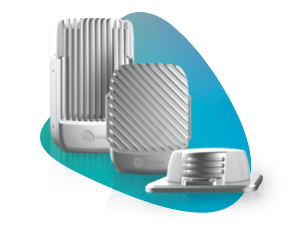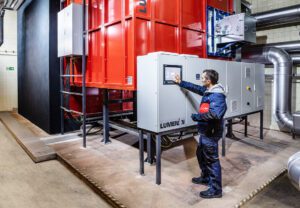beamlink is a connectivity company building the Internet infrastructure (telecom towers) that can get the next 3.5 billion people connected to the Internet. The core problem they tackle is that the current infrastructure for building cellular networks is expensive, heavy, power-hungry, and requires trained engineers to configure and install. beamlink networks cost around 1% of the cost to cover the same area, are fully re-programmable to any cellular protocol, and allow deployment to get started in as little as 5 minutes.
Arpad Kovesdy is the co-founder and CTO of beamlink and has a background in aerospace engineering. Arpad helped start beamlink from his dorm room at the University of Southern California along with Mateo Abascal as a freshman. Arpad started his engineering career working at Boeing Satellite Systems, designing computers and radios to go into spacecraft, and now oversees the technical development of hardware and software at beamlink, growing the company to 10 employees as of 2024.
“We have gotten the best use out of the electronics cooling part of SimScale for analysis of our product in different indoor and outdoor environments. It has helped us immensely in producing a design that can survive a wide range of temperatures and informing our mechanical and electrical component selections.”

Arpad Kovesdy
Chief Technology Officer at beamlink
At beamlink, the engineering team designs the hardware (PCBs, enclosures, and everything in between) for the next generation of cell towers. They leverage advanced simulation tools to refine hardware design, optimize network devices, and minimize the need for costly prototypes. Their workflow primarily involves using CAD tools like SolidWorks, defeaturing the model in OnShape, and performing thermal and structural analyses on the device in SimScale.
SimScale has allowed Arpad and his team to iterate on the design rapidly without having to invest in computers specifically for simulation. And, since the team is hybrid with many employees fully remote, the cloud-based nature of SimScale allows them to collaborate much more easily. The key simulation insights when designing products are to ensure that electrical components are not overheating in the system, adequate cooling is provided in all areas, and, in varying solar and wind conditions outdoors, the system keeps operating. They also analyze various scenarios, like wind loading if the device is mounted outdoors and dynamic analysis (drop-tests) if the device is dropped, to ensure the internal electronics are protected. The team at beamlink has made use of all the main analysis types in SimScale, including thermal, flow, and structural (harmonic analysis and impact drop tests).
beamlinks’ first commercial product, to be released at the end of 2024, specifically uses thermal modeling in SimScale to optimize its cooling demand and strategy, simulating both passive and forced convection options. The device is an all-in-one 4G LTE telecom tower designed for rural communities to get online quickly.


“SimScale has significantly impacted our workflow by reducing the need for extensive physical testing and 3D prototyping, saving us time and costs. Thermal modeling has allowed us to ensure a more reliable product for our customers by simulating real-world conditions before the device is exposed to the elements. Cloud-based simulation has also been a key advantage, allowing us to eliminate the need for expensive and dedicated hardware to run simulations. This has empowered our team to experiment more freely and innovate faster, making beamlink more competitive in the market. The simulation capabilities have also helped our engineers develop cross-functional skills, with electrical engineers gaining a better understanding of the thermal limitations in the design and designers gaining a better understanding of the restrictions of passive cooling and the necessity of applying appropriate heat dissipation features in the geometry.”

Arpad Kovesdy
Chief Technology Officer at beamlink




Sign up for SimScale
and start simulating now